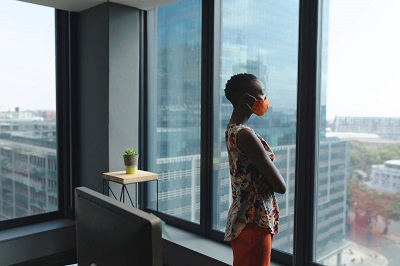-
Audit approach overview
Our audit approach will allow our client's accounting personnel to make the maximum contribution to the audit effort without compromising their ongoing responsibilities
-
Annual and short period audit
At P&A Grant Thornton, we provide annual and short period financial statement audit services that go beyond the normal expectations of our clients. We believe strongly that our best work comes from combining outstanding technical expertise, knowledge and ability with exceptional client-focused service.
-
Review engagement
A review involves limited investigation with a narrower scope than an audit, and is undertaken for the purpose of providing limited assurance that the management’s representations are in accordance with identified financial reporting standards. Our professionals recognize that in order to conduct a quality financial statement review, it is important to look beyond the accounting entries to the underlying activities and operations that give rise to them.
-
Other Related Services
We make it a point to keep our clients abreast of the developments and updates relating to the growing complexities in the accounting world. We offer seminars and trainings on audit- and tax-related matters, such as updates on Accounting Standards, new pronouncements and Bureau of Internal Revenue (BIR) issuances, as well as other developments that affect our clients’ businesses.
-
Tax advisory
With our knowledge of tax laws and audit procedures, we help safeguard the substantive and procedural rights of taxpayers and prevent unwarranted assessments.
-
Tax compliance
We aim to minimize the impact of taxation, enabling you to maximize your potential savings and to expand your business.
-
Corporate services
For clients that want to do business in the Philippines, we assist in determining the appropriate and tax-efficient operating business or investment vehicle and structure to address the objectives of the investor, as well as related incorporation issues.
-
Tax education and advocacy
Our advocacy work focuses on clarifying the interpretation of laws and regulations, suggesting measures to increasingly ease tax compliance, and protecting taxpayer’s rights.
-
Business risk services
Our business risk services cover a wide range of solutions that assist you in identifying, addressing and monitoring risks in your business. Such solutions include external quality assessments of your Internal Audit activities' conformance with standards as well as evaluating its readiness for such an external assessment.
-
Business consulting services
Our business consulting services are aimed at addressing concerns in your operations, processes and systems. Using our extensive knowledge of various industries, we can take a close look at your business processes as we create solutions that can help you mitigate risks to meet your objectives, promote efficiency, and beef up controls.
-
Transaction services
Transaction advisory includes all of our services specifically directed at assisting in investment, mergers and acquisitions, and financing transactions between and among businesses, lenders and governments. Such services include, among others, due diligence reviews, project feasibility studies, financial modelling, model audits and valuation.
-
Forensic advisory
Our forensic advisory services include assessing your vulnerability to fraud and identifying fraud risk factors, and recommending practical solutions to eliminate the gaps. We also provide investigative services to detect and quantify fraud and corruption and to trace assets and data that may have been lost in a fraud event.
-
Cyber advisory
Our focus is to help you identify and manage the cyber risks you might be facing within your organization. Our team can provide detailed, actionable insight that incorporates industry best practices and standards to strengthen your cybersecurity position and help you make informed decisions.
-
ProActive Hotline
Providing support in preventing and detecting fraud by creating a safe and secure whistleblowing system to promote integrity and honesty in the organisation.
-
Accounting services
At P&A Grant Thornton, we handle accounting services for several companies from a wide range of industries. Our approach is highly flexible. You may opt to outsource all your accounting functions, or pass on to us choice activities.
-
Staff augmentation services
We offer Staff Augmentation services where our staff, under the direction and supervision of the company’s officers, perform accounting and accounting-related work.
-
Payroll Processing
Payroll processing services are provided by P&A Grant Thornton Outsourcing Inc. More and more companies are beginning to realize the benefits of outsourcing their noncore activities, and the first to be outsourced is usually the payroll function. Payroll is easy to carve out from the rest of the business since it is usually independent of the other activities or functions within the Accounting Department.
-
Our values
Grant Thornton prides itself on being a values-driven organisation and we have more than 38,500 people in over 130 countries who are passionately committed to these values.
-
Global culture
Our people tell us that our global culture is one of the biggest attractions of a career with Grant Thornton.
-
Learning & development
At Grant Thornton we believe learning and development opportunities allow you to perform at your best every day. And when you are at your best, we are the best at serving our clients
-
Global talent mobility
One of the biggest attractions of a career with Grant Thornton is the opportunity to work on cross-border projects all over the world.
-
Diversity
Diversity helps us meet the demands of a changing world. We value the fact that our people come from all walks of life and that this diversity of experience and perspective makes our organisation stronger as a result.
-
In the community
Many Grant Thornton member firms provide a range of inspirational and generous services to the communities they serve.
-
Behind the Numbers: People of P&A Grant Thornton
Discover the inspiring stories of the individuals who make up our vibrant community. From seasoned veterans to fresh faces, the Purple Tribe is a diverse team united by a shared passion.
-
Fresh Graduates
Fresh Graduates
-
Students
Whether you are starting your career as a graduate or school leaver, P&A Grant Thornton can give you a flying start. We are ambitious. Take the fact that we’re the world’s fastest-growing global accountancy organisation. For our people, that means access to a global organisation and the chance to collaborate with more than 40,000 colleagues around the world. And potentially work in different countries and experience other cultures.
-
Experienced hires
P&A Grant Thornton offers something you can't find anywhere else. This is the opportunity to develop your ideas and thinking while having your efforts recognised from day one. We value the skills and knowledge you bring to Grant Thornton as an experienced professional and look forward to supporting you as you grow you career with our organisation.
Fare hikes, high food prices, and elevated charges for electricity, gas, and other fuels are some of the immediate effects of inflation to consumers resulting from the ongoing Russian invasion of Ukraine. These are also added effects en route to economic recovery from the COVID-19 pandemic.
Concerns on inflation arose after the Philippine Statistics Authority (PSA) announced that headline inflation still moved at a faster pace of 6.1 percent in June 2022, described as a three-year high since November 2018 (6.1 percent) and October 2018 (6.9 percent). This sets the year-to-date inflation at 4.4 percent against the Bangko Sentral ng Pilipinas’ (BSP) full-year forecast of 5 percent, which was also raised from the initial forecast of 4.6 percent for 2022 and to 4.2 percent instead of 3.9 percent for 2023. BSP Chief Felipe M. Medalla stated that authorities are still assessing further revisions on the inflation forecast for 2022. However, a downward revision on the inflation projections for 2023 and 2024 is likely to be made by the Monetary Board as major contributors to inflation, particularly the prices of transportation and food, subside. For July, inflation was expected to settle between 5.6 percent and 6.4 percent due to the continued hike on both food and non-food commodity groups. Recent data now shows that July’s inflation rate is 6.4 percent, which happens to be the upper range limit. This escalation prompted countermeasures from both monetary and fiscal policies.
The BSP unexpectedly tightened its monetary policy in a surprise off-cycle meeting last July 14, 2022. This brings the key reverse repurchase facility rate at 3.25 percent after the 75 basis points (bps) hike to repress effects from rising wages and fare hikes. Medalla said that the BSP is prepared to exhaust available measures to “manage spillover effects” after the U.S. Federal Reserve raised their own rates by 75 bps with prospects of further increase. The BSP is ready to implement further monetary policy adjustments, signaling to deliver an increase between 25 to 50 bps during its meeting in consideration of the inflation headline for July and gross domestic product (GDP) growth for the second quarter. Analysts stressed that these hikes should be closely monitored to support the depreciating peso and tame inflation without derailing economic growth.
In a statement, former National Economic and Development Authority (NEDA) Socioeconomic Planning Secretary Karl Kendrick T. Chua posited that, “The Russia-Ukraine conflict has disrupted the global supply chain and elevated commodity prices, particularly for fuel. We have seen how a single crisis can set us back, so the Duterte administration has pursued both short- and long-term interventions to increase the resilience of our domestic economy against external shocks.” This comes after NEDA issued Executive Order No. 171 and the government’s implementation of a fuel subsidy program to help ease the impact of global inflationary pressures. These measures, although temporary, are expected to continue as representatives of minority groups call out for the government’s quick response subsidies to ease inflation. BHW Party-List Representative Angelica Natasha Co stated that marginalized individuals and breadwinners are hit hard by rising commodity prices that would not be covered by a minute increase in minimum wages, further adding that programs such as the Libreng Sakay program, Pantawid Pasada Program and cash aid programs, such as the Tulong Panghanapbuhay sa Ating Disadvantaged/Displaced Workers (TUPAD) and the COVID-19 Adjustment Measures Program (CAMP), should be restored and/or maintained to ensure immediate savings and assistance to Filipinos.
Despite continuing pandemic-related disruptions and renewed bottlenecks in global supply chains, economists are still hopeful that there would be continued growth in this part of the region. In an interview by a local paper, Deutsche Bank Chief Executive Officer for Asia Pacific Alexander von zur Muehlen stated that the Association of Southeast Asian Nations (ASEAN) and neighboring parts of Asia will see GDP grow substantially as compared to the rest of the world, indicating that growth opportunities are over proportional and positive for an improved economy in our region. This is supported by PSA data showing a faster-than-expected 8.3 percent growth in the first quarter, basing on the Development Budget Coordination Committee’s target of 6.5 to 7.5 percent GDP growth for 2022.
The extent of these rapid changes is felt more intensely as we wind towards the end of the year. Consumers are expected to cope with fluctuating repercussions of external developments, as well as with domestic shocks brought about by frantic weather changes in the Philippines. Moreover, this would require heightened vigilance in the audit profession, especially for industries that are substantially affected by policy adjustments, as accumulated effects of inflation are foreseen.
As published in Mindanao Times, dated 24 August 2022




